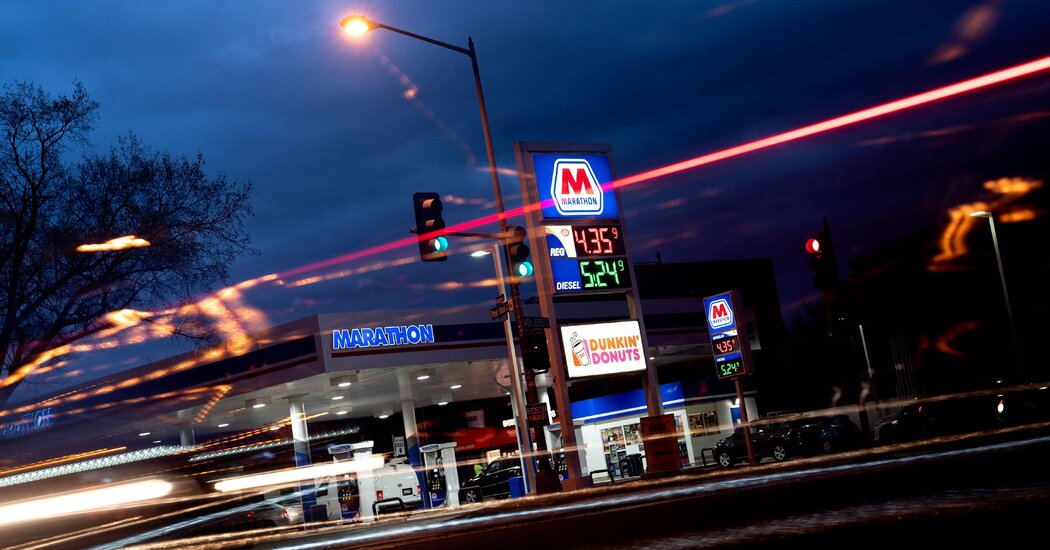With the summer driving season approaching, the national average price for regular gasoline soared on Tuesday to a nominal record of $4.37 a gallon. But relief may be on the way, with oil prices falling below $100 a barrel, a drop of roughly 10 percent since the weekend.
It can take a week for prices at the pump to reflect the gyrations of the crude oil price, which have dropped from a high of over $120 for West Texas intermediate, the US benchmark, in March.
That weakness reflects a slowing of the Chinese economy because of a lockdown of several cities fighting the Covid-19 pandemic, along with a growing consensus among traders that the global economy is also slowing.
“I think the consumer will get a bit of a break here,” said Tom Kloza, global head of energy analysis at Oil Price Information Service. “Just watch out for July and August. I think the consumer will drive this summer whether it’s $4 a gallon or $6 a gallon.”
Oil markets have been buffeted lately by contradictory trends. Saudi Arabia lowered oil prices to its Asian customers over the weekend, which should put some downward pressure on prices worldwide. But the proposed European embargo on Russian oil has heightened expectations that global crude supplies will tighten and raise prices.
Over the years, gasoline prices have risen as motorists have hit the road for summer. The national average price for a gallon of regular gasoline has risen 17 cents in the last week, an unusually rapid climb. A year ago, the average was $2.97, according to the AAA motor club.
Gasoline prices vary widely across the country because of local taxes and regulations. California drivers pay an average of $5.84 for a gallon of regular while Texans pay $4.07.
Gasoline prices, when adjusted for inflation, were highest in July 2008, when the average gallon of regular rose to nearly $5.40 in today’s dollars.
“Within the next two weeks, we should see the peak of gasoline prices,” said Michael Lynch, president of Strategic Energy and Economic Research, which does consulting and analysis in the oil and gas industry. “Oil prices should go down because people will realize that Russian supplies will not disappear as the European sanctions are phased in. They’ll simply be shifted to new customers.”
Diesel and jet fuel prices have been rising faster than gasoline, putting further inflationary pressure on agriculture, shipping and travel. Natural gas prices have also been gyrating. They rose 4 percent on Tuesday after dropping by more than 11 percent on Monday.
